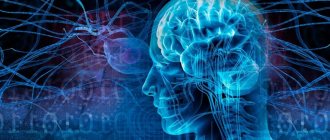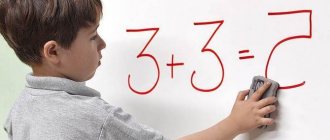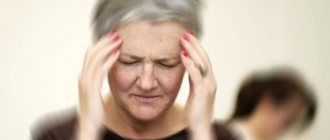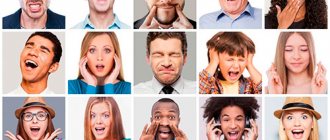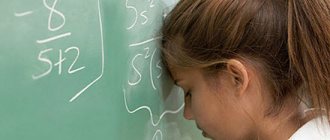— How does the LHC differ from the Tomatis method, micropolarization? How do they fit together?
BAC is the impact of an acoustic signal, coordinated with the functional activity of the brain in real time, to activate the work of regulatory structures. Micropolarization is exposure to direct currents to stimulate the central nervous system. The signal used in the Tomatis method, unlike the LHC, is not consistent with the functional activity of the brain at the current time, and therefore is not as effective. BAK has a more targeted and natural effect on the body. At the same time, BAC is combined with polarization, reducing the risk of side effects (it is not recommended to do it on the same day), and with Tomatis (it can be done on the same day).
The Republican Scientific and Practical Center for Mental Health is developing new technologies for the treatment of speech disorders in children, including those with autism. Experience has been accumulated in the use of transcranial magnetic stimulation (TMS), micropolarization, and bioacoustic correction in the treatment of mental disorders.
Together with a German company, a scientific project is being carried out on the combined use of TMS and transcutaneous electrical neurostimulation (TENS) in children from 3 to 16 years old with specific speech development disorders and in patients with speech disorders due to autism. The study was approved by the ethics committee of the Republican Scientific and Practical Center for Mental Health.
Causes and characteristics of speech disorders
The procedure for transmitting impulses to the central nervous system
Normal speech development has wide age limits for the development of speech as a higher mental function. However, the absence of single words or words-related speech formations by two years, or simple expressions or two-word phrases by three years, should be regarded as a significant sign of delay. The number of children with speech disorders is growing, according to a number of studies - 25% among children of primary school age.
The formation of speech in girls and boys differs not only in the timing of the appearance of various speech elements, but also in their quality. For example, it is believed that girls are more inclined to construct words that are not in common use. While boys strive for greater accuracy through semantic differentiation, etc.
Speech development disorders are at the intersection of many specialties. Speech is a key factor for the development of a child’s thinking and intelligence in general, therefore, disruption of its formation inevitably entails communication problems, behavioral disorders, and school failure. Speech development delays are observed in a wide range of diseases.
Thus, their cause may be chronic otitis media and other conditions leading to hearing impairment, abnormalities in the development of the articulatory apparatus, cerebral palsy, etc. In addition, speech disorders occur in children with autism. In some cases, at the initial stage it is impossible to establish the etiology of the disorder, therefore, dynamic observation is necessary for accurate diagnosis and assessment of prognosis. Speech development is often influenced by hereditary predisposition, immune and neurochemical disorders, or environmental factors.
In a number of disorders, normal speech development occurs up to a certain age, and then the process stops or even regresses (such conditions are defined not as a delay in speech development, but as a developmental deviation). For comparison: in autism, speech development, as a rule, is altered even at the pre-speech stage (an animation complex is not formed, the humming is poor, low-emotional, “bird-like” language, at the same time the child pronounces whole phrases, but does not use them for communication).
Diagnosis of speech development disorders requires the participation of not only doctors, but also speech therapists, psychologists, specialists in correctional pedagogy, together with the child’s parents.
The basis of many speech development disorders is an impaired balance of inhibition and excitation processes in the brain, which is determined by various neurophysiological mechanisms: the work of synapses, the level of activity of the glutamatergic (excitation) and GABAergic (inhibition) systems, interhemispheric and intracortical interactions, deficiency or excess of certain micro- and macroelements, vitamins, etc. Therefore, restoration of the imbalance of these processes is the basis of the applied hardware treatment methods.
Treatment methods for speech disorders
Currently, there are no medications that could lead a child with a speech development disorder to a full recovery or to an undoubted improvement in the condition, so much attention is paid to speech therapy and psychotherapeutic correction, as well as hardware neurostimulation methods.
Neurostimulation technologies, which include TMS, transcranial electrical stimulation, micropolarization, TENS, are alternative methods of modulating the brain in neurological and mental disorders. Their advantage compared to pharmacotherapy is the absence of toxic effects on the body. In this case, the clinical effect is achieved through the impact of small currents on the excitable structures of the nervous system, which allows you to directly modulate their work and control the processes of neuroplasticity.
The most effective hardware method for treating brain diseases is considered to be TMS, in which a high-intensity alternating magnetic field is focused on certain cortical areas, generating small currents in the axons, which is transmitted both to the cortical neurons adjacent to the site of stimulation, and to the deep parts of the brain and other cortical areas. zones functionally associated with the stimulation zone. This makes it possible to non-invasively influence entire neural networks.
Using certain TMS protocols (high- and low-frequency), it is possible to cause activation of both excitation and inhibition in the central nervous system. In autism, processes of excessive excitation of cortical neurons predominate, caused by hyperactivity of glutamatergic structures, multiple formation of an excessive number of neural connections, which interferes with the learning and normal development of the child, the formation of stable forms of behavior and speech skills. The impact of low-frequency TMS on prefrontal structures can reduce hyperactivity and stabilize the processes of neuroplasticity.
The Republican Scientific and Practical Center for Mental Health has accumulated experience in the use of TMS in the treatment of mental and behavioral disorders, as well as in the introduction of scientifically based techniques into medical practice. Thus, in 2019, the Ministry of Health approved the instructions for use “Method of treatment of general developmental disorders, specific disorders of speech and language development with transcranial magnetic stimulation,” which describes in detail the algorithm for using TMS for these disorders.
Selecting a transcranial magnetic stimulation protocol
Combined TMS and TENS procedure
In young children, the right hemisphere of the brain is ontogenetically more developed, primarily responsible for concrete imaginative thinking. Speech centers are located in the left hemisphere. The impact of low-frequency TMS on the dorsolateral prefrontal cortex (DPFC) of the subdominant hemisphere causes long-term inhibition in its neurons and reduces its antagonistic inhibitory effect on homologous zones of the left hemisphere. This promotes the activation of functional centers in the left hemisphere, which are primarily responsible for logical-abstract analytical thinking.
The high-frequency TMS protocol (10 Hz or more) on the projection of the right DPPC, although (as is believed in a number of studies) to be more effective, is undesirable for use in children.
Firstly , in children the threshold of the evoked motor response (the minimum intensity of the pulsed magnetic field supplied by the device to generate an action potential of 50 μV in certain muscles of the hand) is quite high - 70-100% of the device’s power, therefore it is difficult to tolerate when applying a therapeutic series of high-frequency pulses .
Secondly, in early childhood, especially in autism, slow-wave activity is recorded according to the electroencephalogram, so there is a risk of provoking a generalized seizure when performing high-frequency TMS.
After low-frequency TMS of the right DLPK (for 20 minutes), low-frequency TMS is applied to the homologue of the projection of the speech center in the right hemisphere to activate a similar center in the dominant hemisphere. One TMS procedure lasts 20–30 minutes. The course of treatment includes 15–20 procedures performed daily or every other day with a break on weekends.
Transcutaneous electrical neurostimulation technique
An alternative method for activating cortical structures is to stimulate the peripheral nerves of the extremities using TENS. Cutaneous electrodes are attached to the projection of the median or ulnar nerves of the dominant arm and deliver a low-intensity alternating electrical current, which can spread both to the periphery from the site of action and centripetally to the neurons of the brain.
The method has been known since 1965, but was used mainly for the treatment of pain syndromes. In the last decade, functional TENS has been actively used in the recovery of patients after traumatic brain injuries and strokes with aphasia and paresis of the limbs. The projection of the hand and muscles involved in the act of speech, as well as the motor center of speech (Broca's center) are both structurally and functionally connected. Therefore, activation of the motor and sensory centers of the hand during TENS promotes speech development by analogy with activities for the development of fine motor skills (finger games, drawing, etc.). In addition, electrical stimulation of peripheral nerves activates neuroplasticity processes in the brain.
The use of cortical magnetic field stimulation and electrical stimulation of peripheral nerves makes it possible to have a multimodal, multi-level effect on the processes of neuroplasticity and brain development in children. The combined use of TMS and TENS has not only a synergistic, but also a potentiating effect on the functional state of the brain.
The study evaluates the dynamics of clinical symptoms, the degree of restoration of impaired speech function (initially and after the course of treatment): subjective manifestations (assessment by the patient and the child’s parent) and objective assessment by the researcher according to the treatment protocol.
Contraindications for inclusion in the study are intracranial ferromagnetic and cochlear implants, focal changes in the brain (neoplasms, inflammatory diseases of the central nervous system in the acute period, large cerebral aneurysms or suspicion of them), acute and chronic diseases in the stage of decompensation.
Clinical case of combined TMS and TENS use
The parents of a five-year-old girl, who was diagnosed with childhood autism at the age of 3, contacted the Republican Scientific and Practical Center for Mental Health. During the conversation, it turned out that the absence of speech had been observed since the age of two. During the initial examination, the psychologist noted hysterical behavior. The child reacts to the mother’s requests with excitement and aggression. The girl rubs her face and hands, sways, does not respond to her name, does not answer questions. Speech is spontaneous. Pronounces individual sounds, syllables, rarely words that do not correspond to the situation, does not look into the eyes of the interlocutor and others - he looks away, does not fix it on the object. There is no pointing gesture. Self-service skills are not fully developed. Play activities are not age appropriate. The girl cannot cope with folding pyramids or simple puzzles, and does not participate in role-playing games.
Results of the EEG study: pronounced diffuse disturbances of cortical rhythms were revealed with a predominance of irregular slow activity in the theta and delta ranges of medium amplitude without zonal differences, against the background of which low-amplitude beta activity was recorded. Alpha rhythm index - 13%.
A course of combined low-frequency TMS was prescribed to the projection of the right DLPK (10 minutes), then to the projection of the inferior frontal gyrus of the right hemisphere of the brain (10 minutes) and TENS of the peripheral nerves of the right hand (10 minutes). The course of treatment is 16 daily procedures (except weekends).
After completing the course of TMS and TENS, the patient noted an improvement in communication: the understanding of spoken speech increased, words appeared (for example, greetings and farewells at the end of the treatment session), and voice modulation began. Attention and perseverance have increased significantly. After the 8th TMS and TENS procedure, the patient became interested in toys and independently put together a multi-component puzzle. The background of the mood leveled out: the girl began to fulfill requests more calmly. The patient mastered and began to independently use a mobile phone to watch animated films. An improvement in visual-spatial orientation was revealed.
After the course of treatment, the EEG became more organized; slow-wave activity was not recorded.
Classes with a psychologist, speech therapist, and a second course of hardware treatment after 3 months are recommended.
Summary
As a rule, combined TMS and TENS are well tolerated by children and do not require special preparation. During the session, the child sits in a chair, with the parent sitting opposite (to reduce the patient’s anxiety and play games). There may be slight twitching of facial muscles during magnetic stimulation and arm muscles under the influence of electrical impulses from the TENS device, which does not require special treatment. You can work with your child during the procedure. At the end of the session, the child can attend a speech therapist or educational classes, and even with greater effectiveness in implementing educational programs, since stimulation technologies improve attention. In some cases, daytime rest or sleep is recommended to relieve emotional arousal after visiting the first stimulation procedures and normalizing biorhythms.
Behavioral and speech changes may be noted by the 4th–7th procedure, however, it has been proven that only with a course of TMS and TENS a lasting clinical effect occurs. Repeated courses of hardware treatment should be performed after 3–6 months.
The Republican Scientific and Practical Center for Mental Health is ready to accept patients from all over the country aged 3–12 years for treatment using combined TMS and TENS. Contacts for communication with the authors of the project are in the editorial office of "".
Indications and contraindications
A course of bioacoustic therapy can be prescribed by a neurologist, psychiatrist, psychologist, pediatrician or other specialist. Most often, the procedure is used to relieve symptoms of the disease and improve the patient’s psychological well-being.
Possible indications:
- Mental retardation in a child. Mental retardation is a common diagnosis in pediatric neurology. In this case, it is necessary to influence speech development and other cognitive abilities to achieve the best results.
- Various types of sound reproduction disorders and general speech underdevelopment (GSD). These are dyslalia, embolophrasia, dyslexia, alalia and other disorders. BAC is also prescribed for dysarthria.
- Diseases affecting written speech. First of all, it is dysgraphia.
- Childhood mental disorders affecting cognition and socialization. For example, autistic syndrome requires acoustic therapy, since such treatment restores the child’s mental development. Attention deficit and hyperactivity disorder is also an indication for treatment.
- Various types of neuroses that cause headaches, anxiety and depression.
- Traumatic brain injuries affecting memory, intelligence and emotions.
- Organic brain damage and its consequences. LHC can be performed only after rehabilitation.
The procedure is contraindicated in severe cardiovascular diseases, psychosis, epilepsy and recent stroke. A consultation with a doctor at the clinic will allow you to clarify individual indications and exclude the presence of contraindications. Therapy can be completed in Moscow after initial diagnosis.


